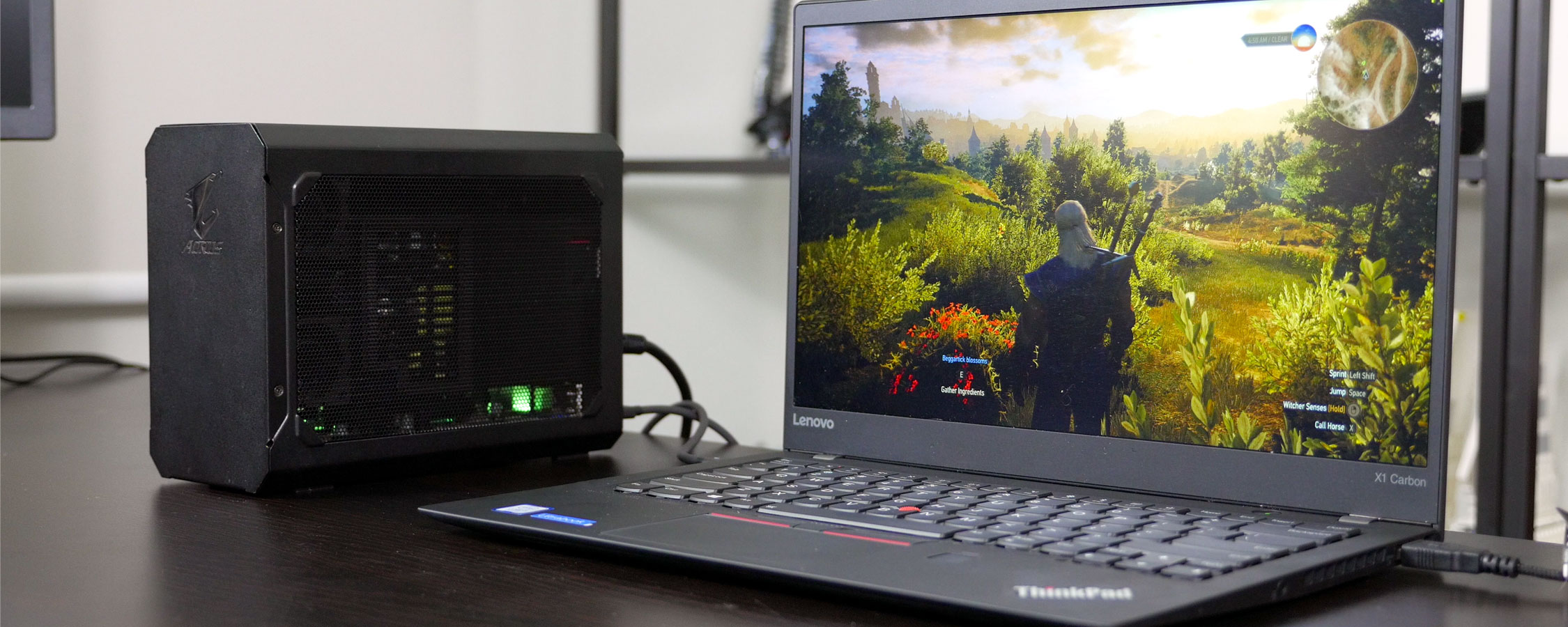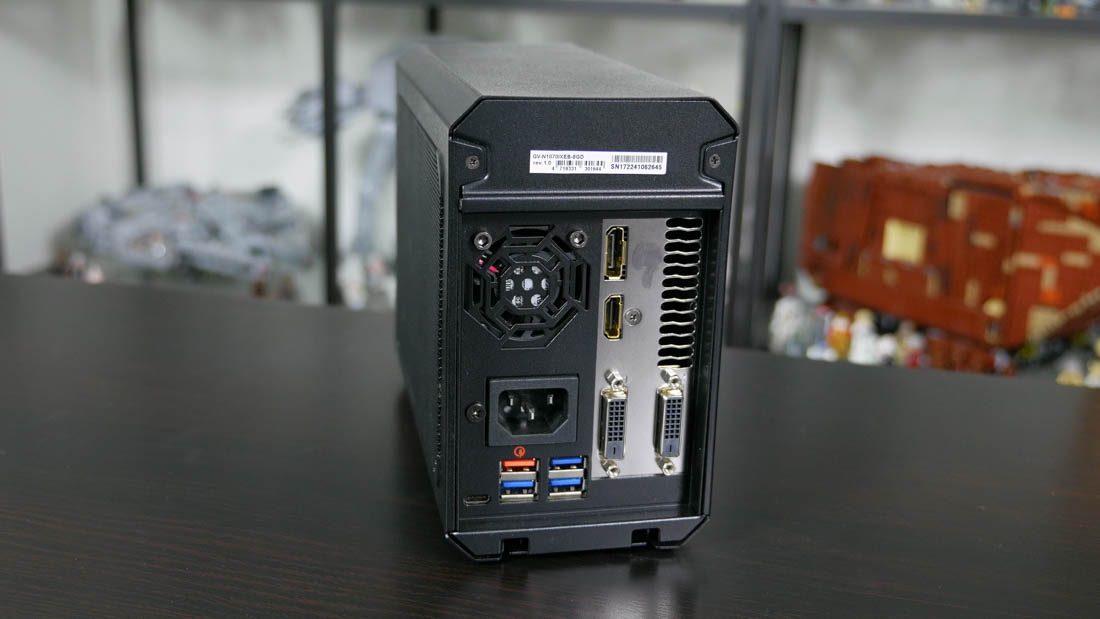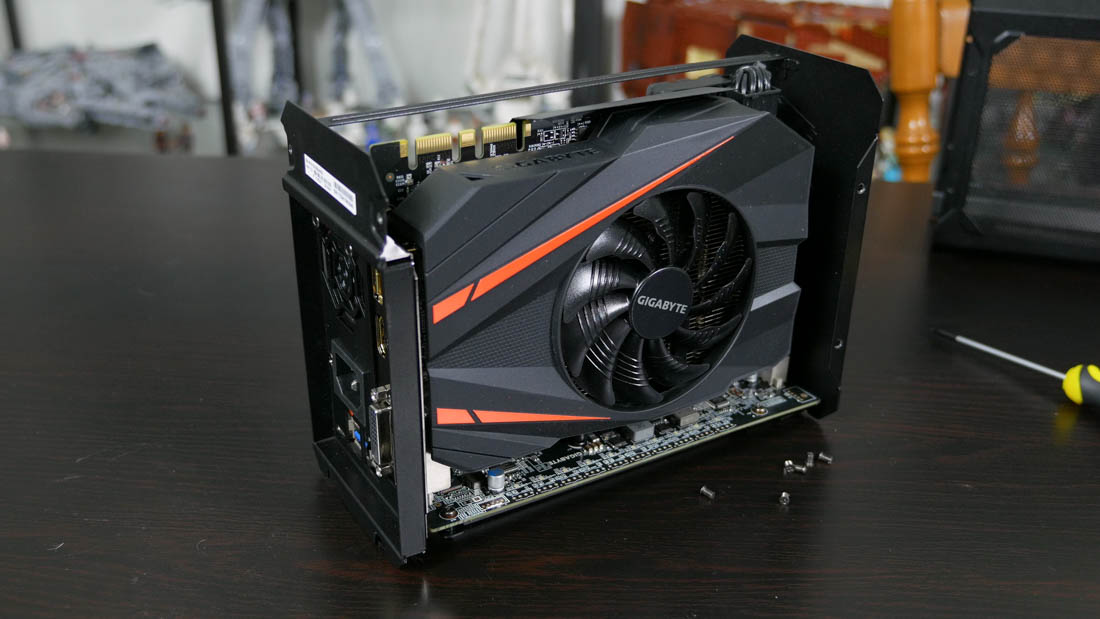Ultrabooks are by far the most popular category of laptops, providing enough performance for everyday tasks in a compact, portable form factor you can carry between home and office. But there's one crucial task that these thin-and-light machines are incapable of, and that's hardcore PC gaming.
Most people looking to play games on their PC will examine a few options. Desktop PCs are the best choice from a price and performance perspective, but they aren't portable. A desktop will require an external monitor and peripherals, and simply can't replace what a laptop does.
Gaming laptops are a portable equivalent and surely they're getting better, but for the most part they're always larger and heavier than an ultraportable for a decent level of power; plus they tend to be pretty expensive.
A new option for PC gaming has started to appear over the last few years: external graphics boxes, which connect to a laptop and provide the power of a fully-fledged graphics card when you're at your desk.
An external box will still allow you to carry around your favorite laptop on the go. A couple of options have hit the market so far, the proprietary Alienware Graphics Amplifier and the Razer Core. The problem with these is the outrageous pricing.
The Razer Core is particularly interesting because it's compatible with many laptops via Thunderbolt 3, but costs a whopping $499.99 without a graphics card. This makes the total cost of external laptop graphics a very expensive proposition, especially if you want decent power from something like a GeForce GTX 1070.
This is where the new Aorus GTX 1070 Gaming Box comes in. It offers similar features to the Razer Core - it's an external desktop graphics card enclosure that connects to laptops via Thunderbolt 3 - but costs $600 with a GTX 1070 included inside. The Razer Core with equivalent hardware will set you back at least $300 more.
The GTX 1070 Gaming Box is much more compact as well. Leveraging Gigabyte's GTX 1070 Mini ITX OC along with a slimline 450W 80Plus Gold power supply. This does restrict upgradeability of the unit, but it keeps it small and portable.
At just 2.4kg heavy, you can pretty easily carry around the entire unit with the provided carry bag, and its small footprint is suitable for any desk setup.
I really like the design of the Gaming Box, with metal on all sides and large vents on the left and right. There's even RGB lighting in there. On the rear you'll find all the I/O: AC power in, Thunderbolt 3, four USB 3.0 ports (one supports Quick Charge 3.0), and all the display outputs from the graphics card, in this case DisplayPort, HDMI and two DVI.
Setting up and using the Gaming Box is extremely simple. To be honest I was expecting it to be less straightforward, but all you have to do is plug in the power cord, connect it to your laptop via Thunderbolt 3, let your laptop's Thunderbolt 3 driver utility set up the unit with a few prompts, then install Nvidia's GeForce graphics driver. That's it.
From there, the Gaming Box works exactly as you'd expect. When running a game, it automatically switches from using internal graphics to the external GTX 1070, and passes the display signal back to the laptop's display. If you hook up an external monitor, that works even better, with a small performance advantage. And of course, you can use the rear USB ports to attach your keyboard and mouse.
The unit is fully plug and play with no on/off switch. Plug in the Gaming Box, and the unit will automatically power up and your setup will switch to external graphics when required. Disconnect the Aorus Box and there's a smooth transition back to using integrated graphics. And thanks to power delivery over Thunderbolt 3, the Gaming Box charges your laptop while it's connected (where supported) with up to 100W of juice.
I was expecting to have some sort of struggle using this device for gaming, or some sort of plug and play issue, but that wasn't the case at all. It worked perfectly with my Kaby Lake Lenovo ThinkPad X1 Carbon.
Oh and here's a quick note on the noise and thermals produced by the Gaming Box. Under load the Box is pretty quiet, thanks to the large cooling vents on either side providing enough airflow such that the fans don't have to spin up significantly. Unfortunately there is a bit of coil whine from the power supply, noticeable when the GPU is fully utilized. As for temperatures, the GPU sits comfortably at around 70°C under load, which is what you'd expect from this card in a desktop PC.





